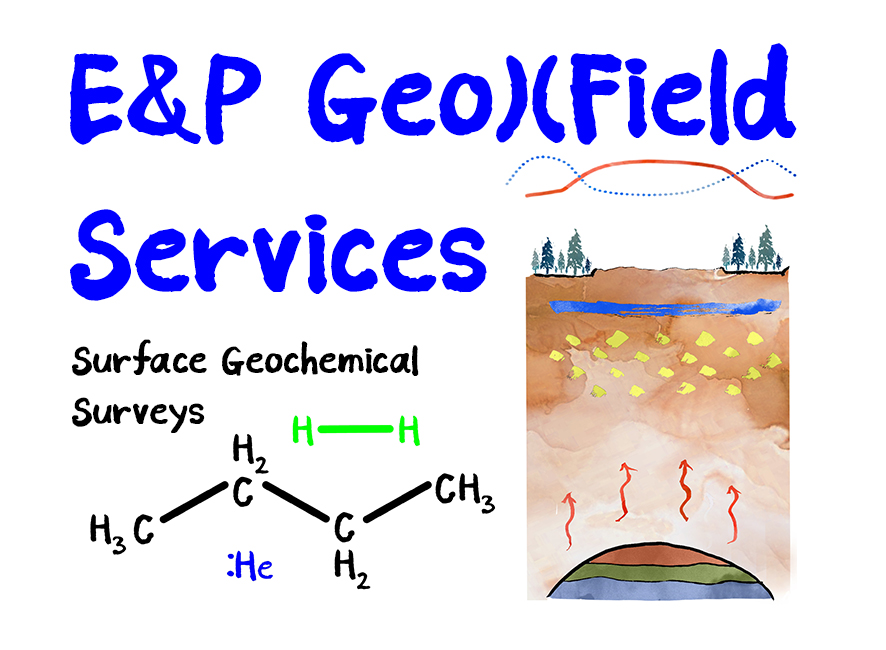Surface Geochemical Exploration for Oil and Gas
The great majority of oil and gas pools and mature source rocks have recognizable surface geochemical expression. The O&G industry devotes significant time and resources in finding and defining traps, but little or none in establishing the likely presence of hydrocarbon in those traps, especially for older onshore basins.
This program will cover surface geochemical and non-seismic detection of oil and gas, the variety of surface and near-surface methods for high-grade basins and plays, and the pre-drilling prediction of hydrocarbon charge. Explorationists will learn the techniques and methodologies that will help refine the economic evaluation of reservoirs before investing in to new plays. Explorationists will be able to learn how surface geochemical exploration methods can be complementary to existing seismic and geological methods. This will be tackled during the discussion sections on survey design, frontier basin evaluation, high grading leads and prospects, applications for field development, data interpretation and integration, and scores of exploration examples. The course is illustrated from a wide range of international basins and plays, structural and stratigraphic case studies, onshore and offshore examples, and also the application to shale-chalk plays. The methods that will be discussed in this course can help reliably predict 70%-80% of subsequent commercial discoveries, and about 90% of the eventual dry holes.
Topic – Surface geochemical and non-seismic detection of oil and gas; a variety of surface and near- surface methods are available to high-grade basins and plays, and for pre-drilling prediction of hydrocarbon charge.
Course is illustrated with many examples from a wide range of international basins and plays; structural and stratigraphic, onshore and offshore, and also discusses applications for shale-chalk plays.
Who should attend – Course is designed for exploration and development geoscientists, E&P managers, and anyone wanting a comprehensive overview of these highly effective but underutilized technologies.
Why should you attend – The great majority of oil and gas pools (and mature source rocks) have a recognizable surface geochemical expression. Our industry devotes significant time and resources to finding and defining traps, but little or none in establishing the likely presence of hydrocarbons in those traps (especially for older onshore basins). The methods discussed in this course can reliably predict 70-80% of subsequent commercial discoveries, and about 90% of the eventual dry holes.
Objectives (Goals)
By the end of the course, participants will have learned the following:
- A basic understanding of hydrocarbon seepage and microseepage, as well as seepage characteristics, mechanisms and rates
- The varied surface and near-surface expressions of hydrocarbon seepage and microseepage-geochemical, mineralogic, and geophysical
- The various direct and indirect geochemical, remote sensing, and non-seismic geophysical methods available for the detection of hydrocarbons
- The importance of proper survey design and survey method selection
- Guidelines for interpretation of surface geochemical and non-seismic data
- Pitfalls to avoid in acquisition and interpretation of geochemical and non-seismic data
- The value added to conventional geologic and seismic data by inclusion of data from hydrocarbon detection surveys.
Contents
Course Outline – Day 1
Welcome and Introduction; Instructor’s Background; Background of Participants.
Goals of the Course; Overview of the Short Course
Hydrocarbon Seepage and Geochemical Exploration – History; Near-Surface Expression of Hydrocarbon Migration; Models for Migration and Microseepage; Migration Rates.
Direct Detection Methods of Hydrocarbon Migration – Soil Gas, Acid Extracted Soil Gas, Fluorescence (Aromatics), Heavy Hydrocarbons, Sniffers, Airborne and Satellite Sensors.
Course Outline – Day 2
Indirect Geochemical Detection Methods – Microbial, Radiometric, Helium, Iodine, Soil Alteration, Biogeochemical, Vegetation Effects, Remote Sensing
Indirect Non-Seismic Geopyhysical Detection Methods – Electrical, Aeromagnetic and Ground Magnetic (Micromagnetics); Passive and Active Electromagnetics; Telluric Methods.
Geochemical Survey Objectives, Survey Design, Method Selection
Introduction of Class Mapping Exercise
Exploration Case Histories 1 – Reconnaissance Surveys in Frontier Basins and other Underexplored Areas
Course Outline – Day 3
Exploration Case Histories 2 – Evaluation of Exploration Leads and Prospects; Prospect Generation from Geochemical Leads; Pre-Drill Prediction of Hydrocarbon Charge.
Exploration Case Histories 3 – Applications for Field Development and Production; Production Monitoring; Applications for Shale Gas – Shale Oil Development.
Interpretation Guidelines – Inferring Hydrocarbon Composition; Recognizing and Defining Significant Microseepage Anomalies.
Integrating Geologic, Seismic, and Geochemical Data; Uncertainties and Limitations.
Discussion of Analytical Data Mapping
Summary and Discussion
Teaching material – Powerpoint Presentation, Short course notebook (180 pp), and digital copies of 2 AAPG publications on this topic, AAPG Memoir 66 (Hydrocarbon Migration and Its Near-Surface Expression) and AAPG Studies in Geology #48 (Surface Exploration Case Histories)
